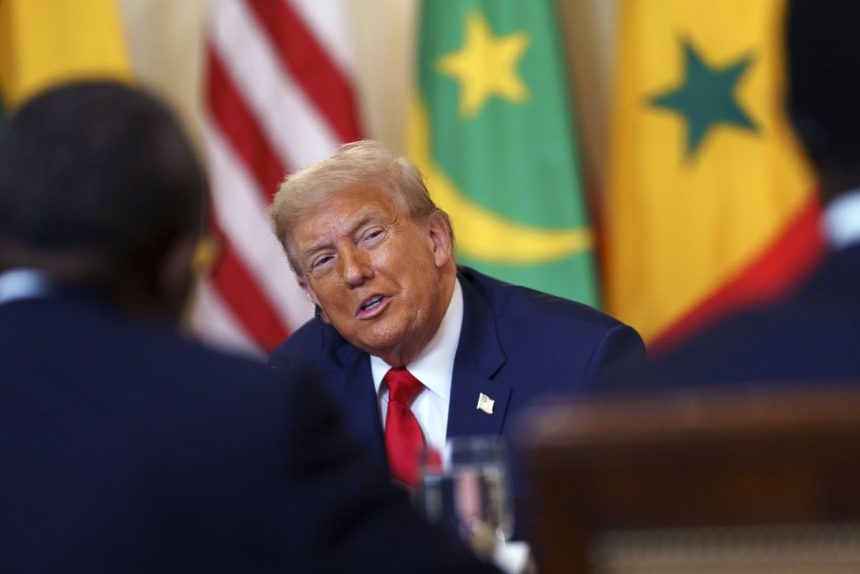President Trump’s Tariff Initiative Faces Challenges
As the deadline for President Donald Trump’s suspension of reciprocal tariffs approaches this Friday, the administration has made limited progress on its ambitious plan for new trade agreements.
Commitments and Delays
Throughout his second term, Trump has repeatedly pushed back deadlines but declared on social media this Wednesday that there will be no further extensions. Following his announcement, he revealed a 90-day pause on new tariffs on Mexico while trade talks continue.
Current Trade Status
- The U.S. has reached preliminary trade agreements with at least five countries.
- Trump has confirmed a deal with the European Union, setting a 15% tariff on most goods from its 27 member nations.
The EU is the U.S.’s largest trading partner, accounting for approximately $605 billion in goods exchanged annually. However, the new tariff arrangement does not affect the 50% tariffs on steel imposed earlier this year.
Evaluation of Tariff Policy
Trump’s tariff strategy was aimed at reshaping global trade dynamics favorably for the U.S. In April, he claimed to have finalized 200 deals, yet detailed information was never shared. The administration also floated a goal of “90 deals in 90 days,” which now appears unlikely to be achieved.
Despite falling short of these objectives, Trump has defended his tariff policies, stating on social media, “We are very busy in the White House today working on Trade Deals. I have spoken to the Leaders of many Countries, all of whom want to make the United States ‘extremely happy.'”
Negotiations with South Korea
This week, Trump announced continued negotiations with South Korea, where currently a 25% tariff is applied to U.S. goods. He indicated that South Korea has proposed an arrangement to reduce this tariff rate.
An agreement was finalized on Thursday, allowing the U.S. to lower the tariff on South Korean goods to 15% in exchange for $350 billion in U.S.-controlled investments.
Recent Developments with China
China remains a significant focus of Trump’s tariff policy. In June, Trump announced an agreement regarding the trade of rare earth minerals between the U.S. and China, which led to a mutual reduction of tariffs for a specified period.
The current 34% reciprocal tariff on all Chinese products is suspended until August 12, while China has ramped up its tariffs on American goods by over 120% since Trump’s administration began.
Trade Announcements in July
July was a particularly active month for trade announcements, beginning with a deal with Vietnam on July 2. Under this agreement, Vietnam will incur a 20% tariff on exports to the U.S. and a 40% tariff on goods transshipped through Vietnam.
U.S. exports to Vietnam will not be subject to tariffs. As discussions with Vietnam unfolded, Trump expressed skepticism about reaching an agreement with Japan, where a 24% tariff is currently in place.
Impact of Trade Discussions
According to figures from the Office of the U.S. Trade Representative, the trade volume between the U.S. and Japan was valued at $227.9 billion in 2024, showing a 5% increase in U.S. exports compared to 2023. Japan’s Deputy Chief Cabinet Secretary, Kazuhiko Aoki, stated, “Japan will continue to engage vigorously in sincere and honest discussions toward the realization of an agreement that will benefit both Japan and the United States.”
In July, Trump met with leaders from five African nations—Senegal, Liberia, Guinea-Bissau, Mauritania, and Gabon—to discuss boosting trade relations, asserting, “We’re shifting from aid to trade. In the long run, this will be far more effective and sustainable and beneficial than anything else that we could be doing together.”
New Agreements
Following these discussions, Trump announced a similar agreement with Indonesia, where the country will pay a 19% tariff on U.S. exports while significantly lowering tariffs on imports from the U.S. This deal includes a commitment from Indonesia to purchase $15 billion in U.S. energy, $4.5 billion in agricultural products, and 50 Boeing jets.
Additionally, Trump noted that the Philippines has also agreed to cut tariffs on U.S. products, adjusting its tariff from 20% to 19% on imports from the U.S. The total trade between the U.S. and the Philippines was approximately $23.5 billion in 2024.







